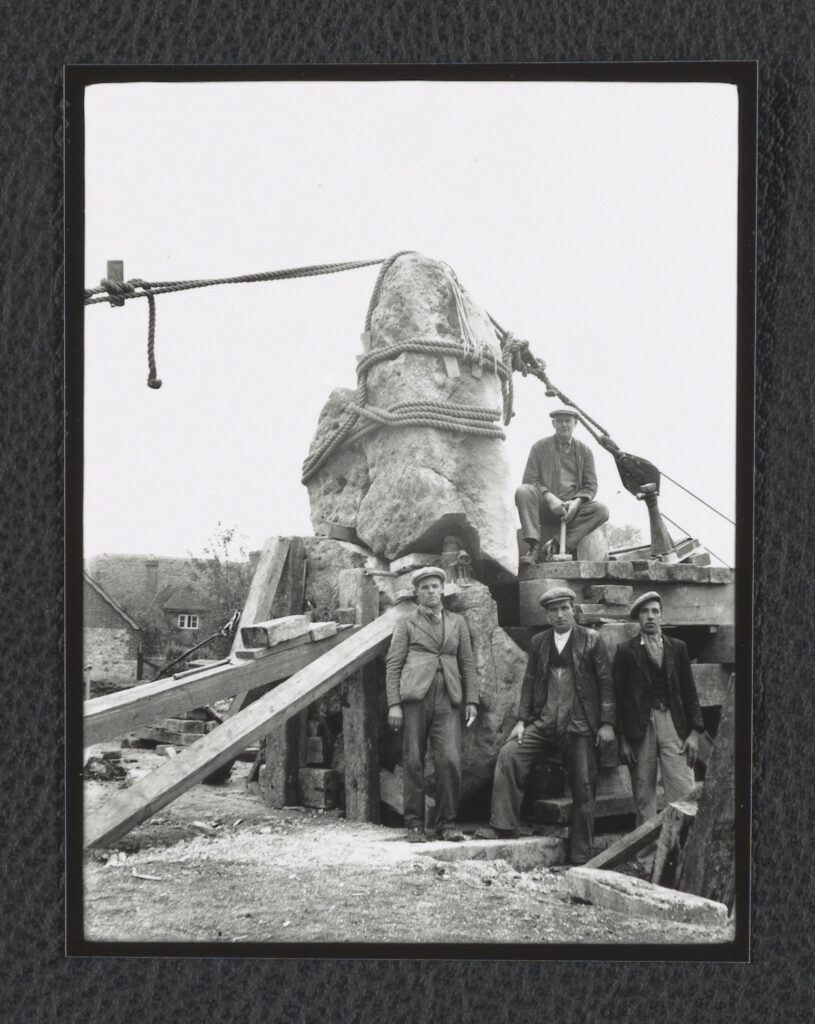On 13 October 2023, a news website decided to run with a rather scandalous headline about Avebury.
The headline reads: “Revealed: The World Heritage ancient stone circle at Avebury is FAKE – with photographs showing that the stones were actually erected in the 1930s… and some are upside down”.
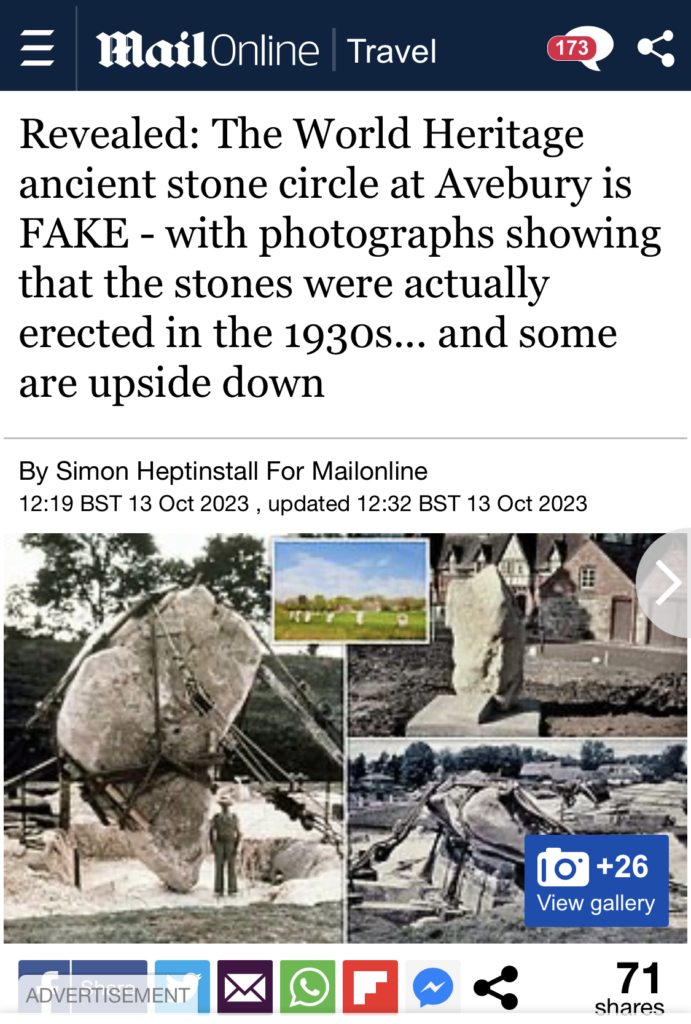
The cat is well and truly out of the bag! We’ve been found out!
But wait. Before panic sets in, it’s worth exploring this article a little further.
First of all, the article writer seems to have picked up month-old news about Historic England’s freshly digitised Avebury materials. You can explore the “Series of slides taken by Alexander Keiller showing the standing stones and excavations at Avebury and West Kennet Avenue” over on Historic England’s website. It’s lovely to see Avebury in the dreamy colours of almost 100-year-old slides.
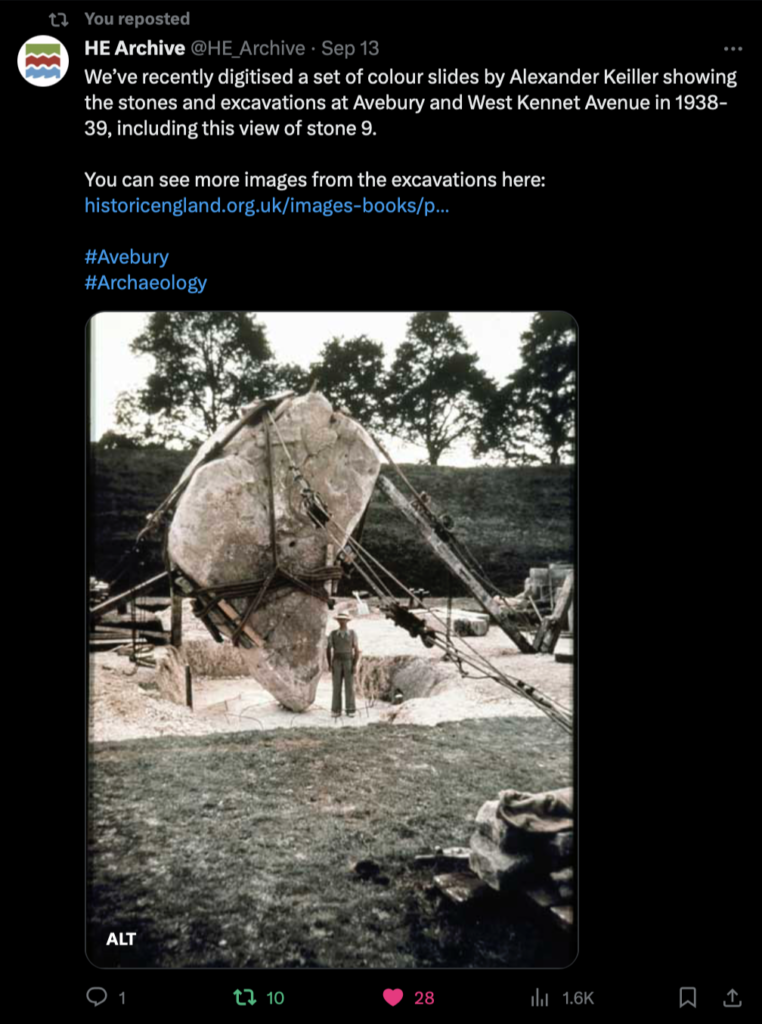
For those of us familiar with Avebury, it’s easy to laugh or eye roll at the October newspaper headline. But, this article, and some of its comments, are actually very interesting as a case study of how histories are made and re-made over time.
The 1930s excavations have never been a secret. During the excavations Keiller and his team frequently showed visitors and journalists around. One scrapbook in the Alexander Keiller Museum collection includes pasted headlines and cuttings from 1938, describing a “new wonder of the world” being unearthed.
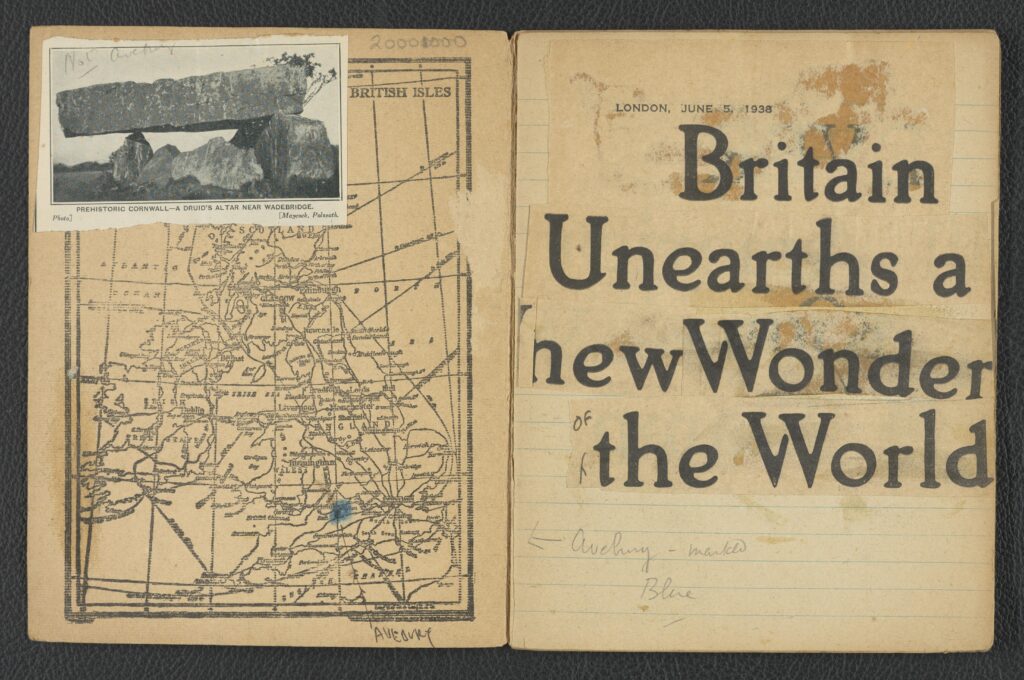
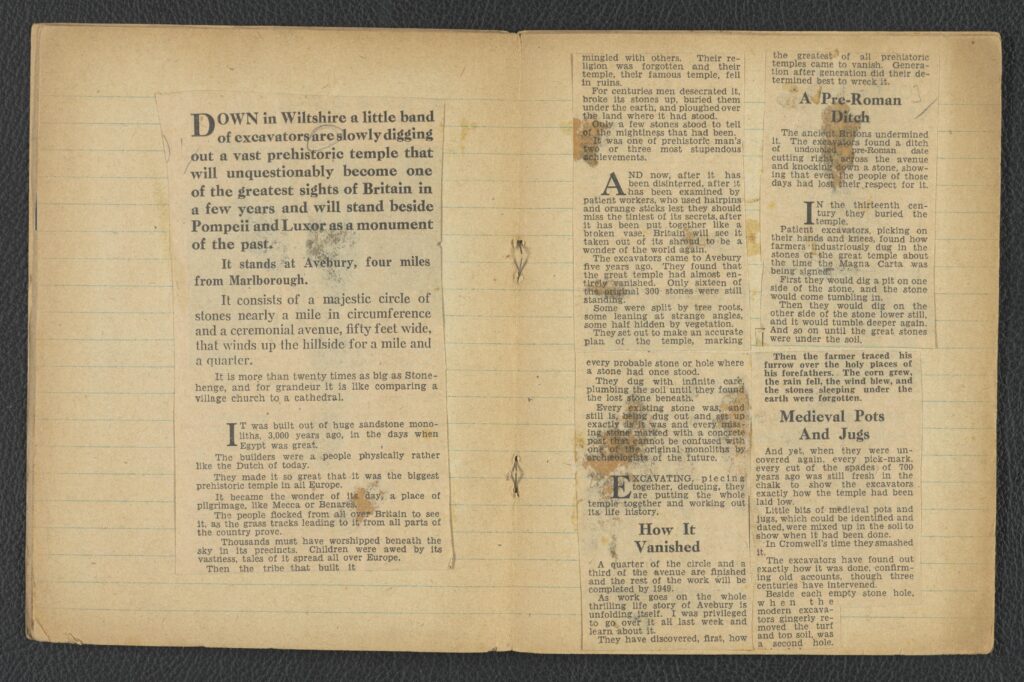
Avebury has been in and out of the news ever since. However, with news cycles moving quickly, we might forgive people for missing stories, especially if they don’t live in the area, or just aren’t looking for archaeology stories. We can certainly understand that some folks can’t access the archive or up to date research (even 100 year old research), as so much information is behind pay walls or exists only in a physical location.
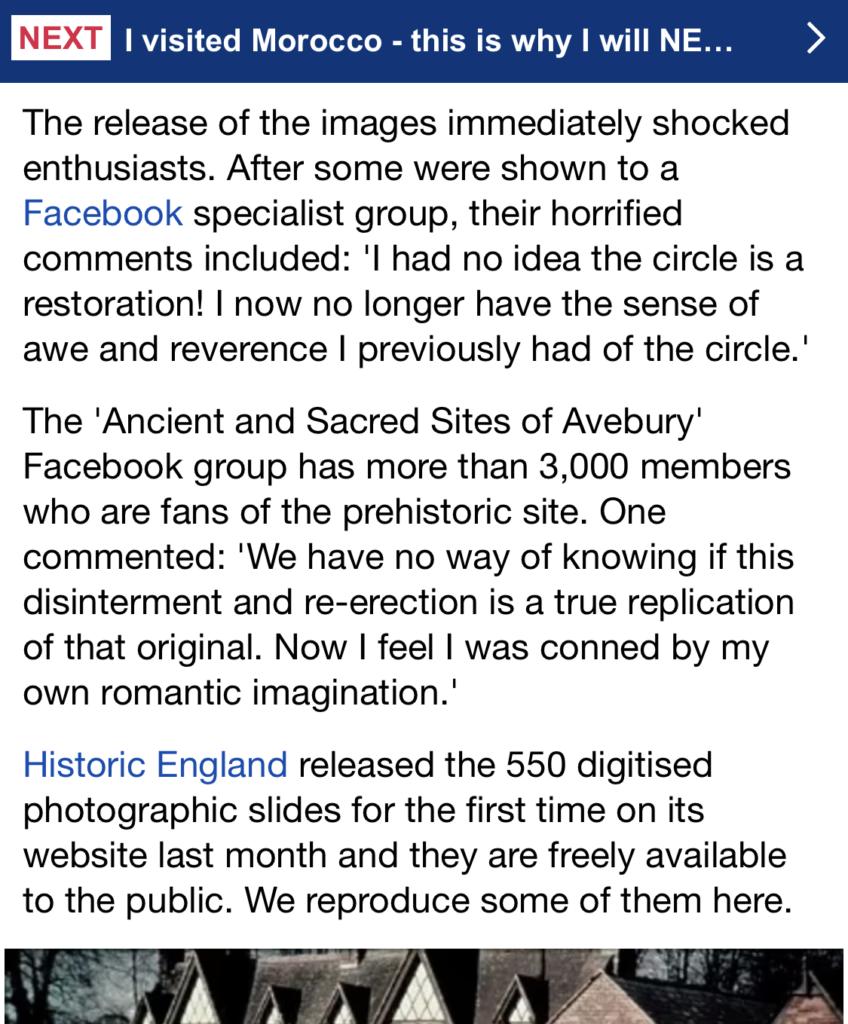
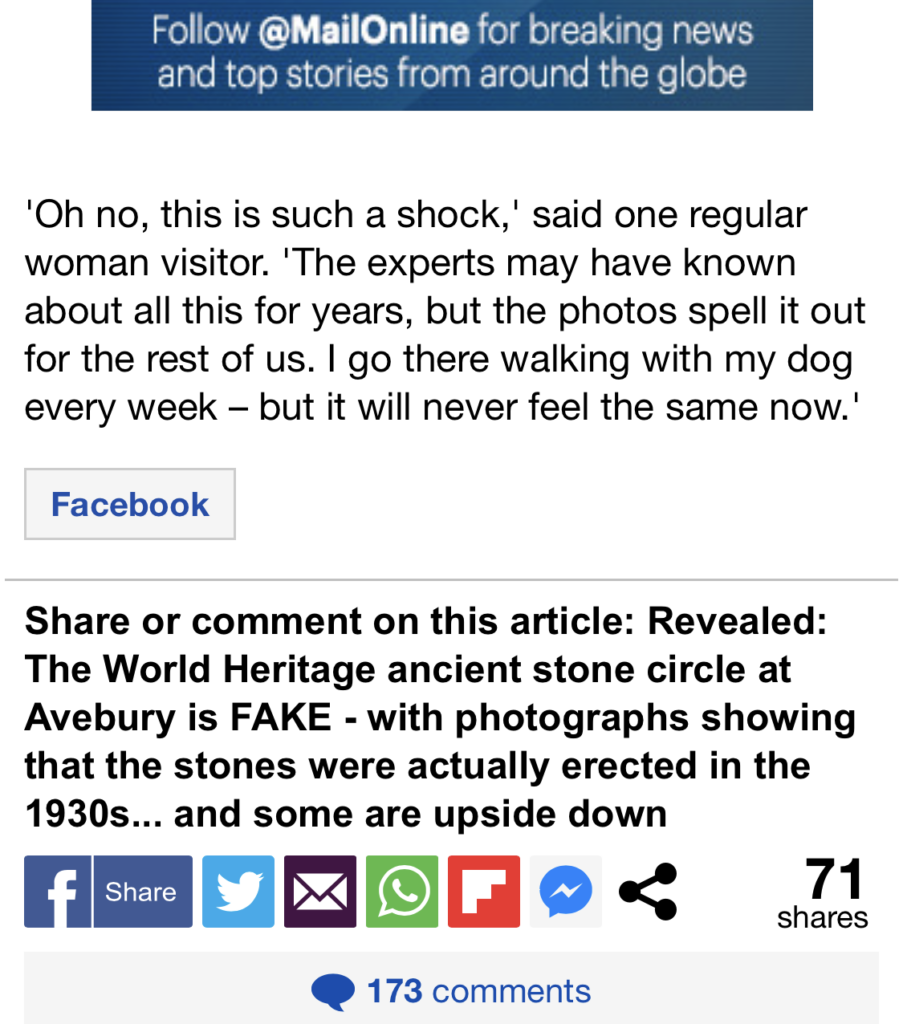
Comments quoted in the article are a good reminder not to take knowledge about Avebury for granted: apparently even members of a ‘specialist’ Avebury Facebook group and a ‘regular visitor’ were shocked at the news of Avebury’s 1930s restoration. (Although, it has to be said, a quick browse of the aforementioned Facebook group reveals many other members were quick to point out the article’s inaccuracies, and the “common knowledge” status of Avebury’s restoration).
These quotations bring me to thinking about how emotions and histories are linked together, and how places exist in people’s heads as much as the physical world.
Ask 100 people what “Avebury” is, and you could get 100 different answers. While Avebury is a very real place, it’s also a symbol, or concept, or idea. It exists in the imagination of everyone who has ever heard of it. Every visitor to Avebury also of course experiences it in a unique way.
So, a challenge that we’re thinking about as part of the Avebury Papers project is how to communicate Avebury’s complex stories to people who all have very different starting points.
Using a scandalous headline can arguably be an effective way to gain attention. But I’d be a bit nervous to use such an approach: it entrenches some negative views of archaeology which have repercussions at a wider scale. The reoccurring myth that archaeologists are keeping secrets from everyone perpetuates a pernicious distrust of expert knowledge, which often goes hand in hand with some damaging conspiracy theories that seek to fracture society.
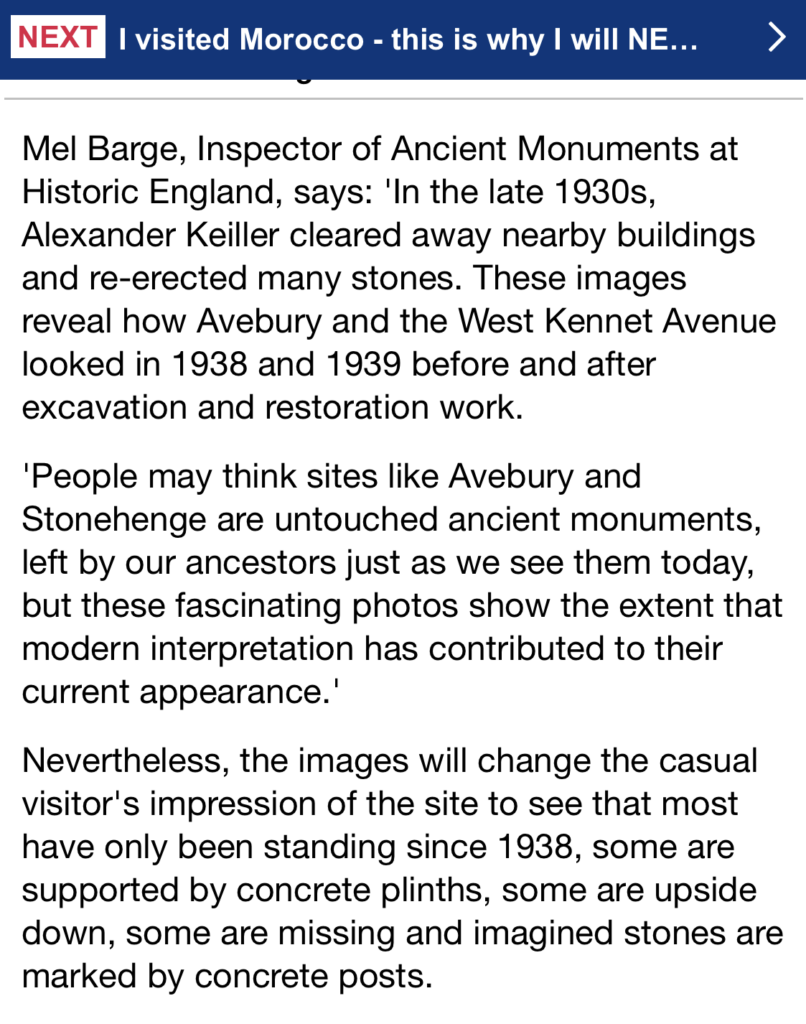
The quotations from Historic England in the article are straightforward enough: “these fascinating photos show the extent that modern interpretation has contributed to their current appearance”.
But I’d like to dwell a little more with the language that people use to describe their reactions to the photographs. It seems like some people don’t want to know about Avebury’s modern interpretations. The journalist reported that people felt ‘shocked’ or ‘conned’ by the photographs. These are big emotions: more knowledge seems to ruin something about Avebury.
And they lead me to some questions which I’d like to explore more as the project progresses.
- How do photos of 1930s Avebury make people feel about the site?
- What role do such pictures have in people’s experience of Avebury?
- What kinds of emotions should an archive project try and provoke?
- How can we use archival material to tell multiple stories of Avebury?
Perhaps you’d like to offer your answers in the comments!
